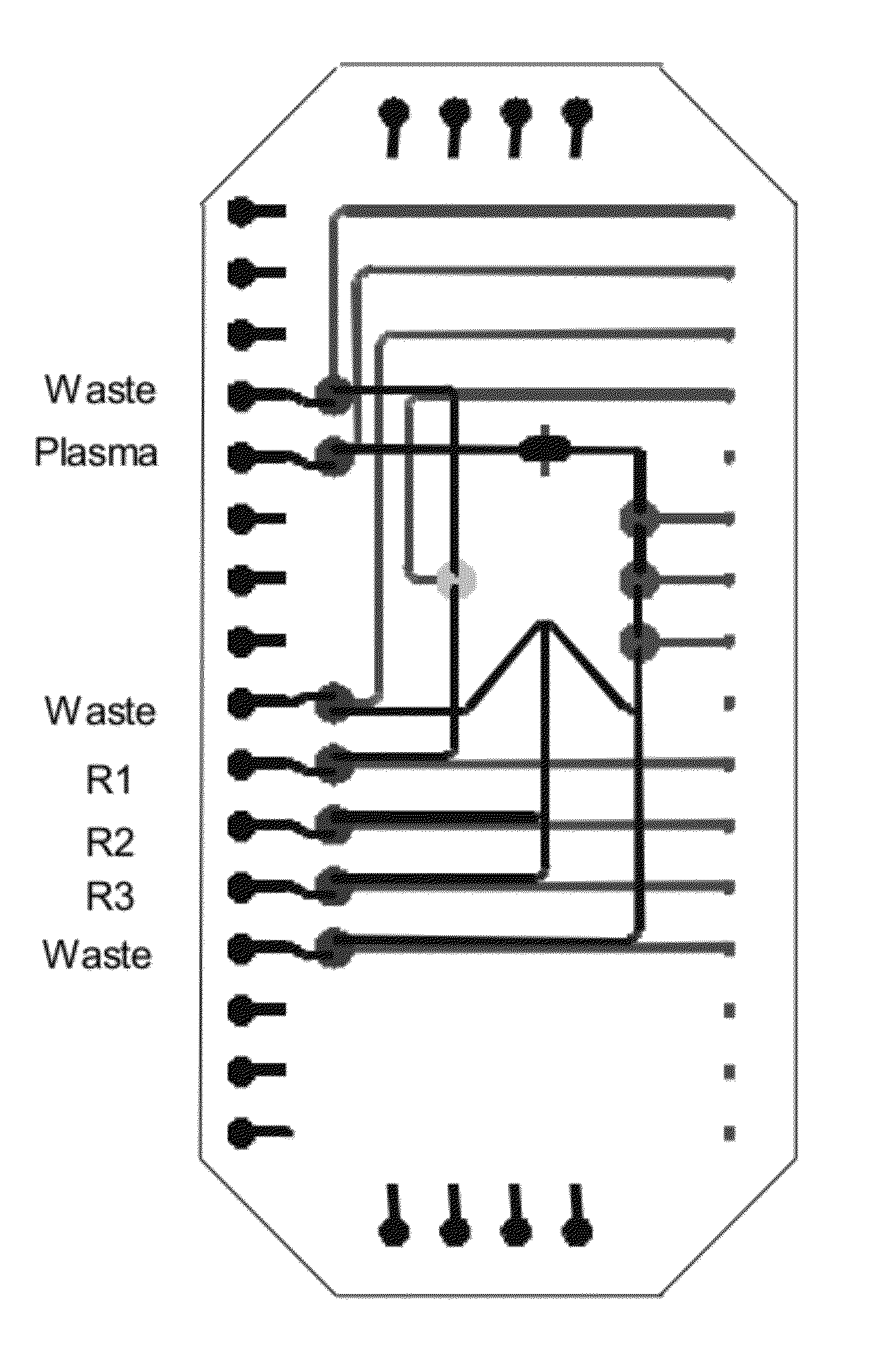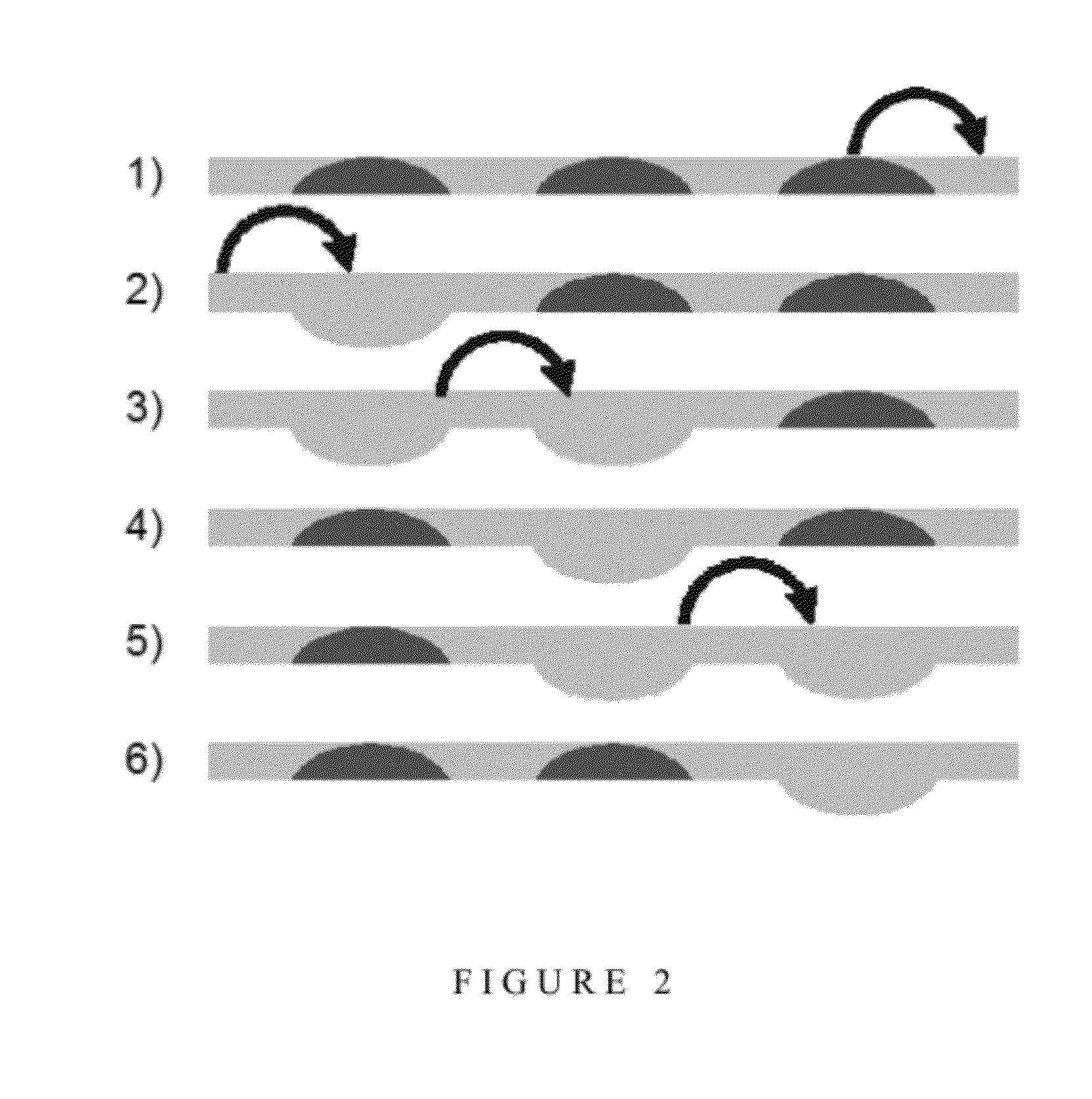Microfluidic mixer
- Summary
- Abstract
- Description
- Claims
- Application Information
AI Technical Summary
Benefits of technology
Problems solved by technology
Method used
Image
Examples
example 1
[0122]Effect of the Frequency of the Steps of the Peristaltic Cycle
[0123]Many biological assays require at least one mixing step. Most often, the mixing has to be quick to reduce the time to result (as in RNA assay). What is more is that certain enzymatic reactions might require the observation of a signal increase or decrease from a mixed solution. In this case, the mixing has to be very quick to allow the observation of the signal from the mixed solutions at rest (as in an alanine aminotransferase assay). As described above, the pumping may be done through actuation of three valves in a peristaltic cycle made of six steps. The frequency at which those steps follow each other will impact on the overall flow rate. FIG. 3 shows the effect of different time periods between successive steps ranging from 10 to 200 ms on the flow rate of the fluid. In the present invention, 25 ms provides the largest flow rate.
example 2
[0124]Use of a Four Valve Peristaltic Pump Rather than a Three Valve Peristaltic Pump Improves the Efficiency of Peristaltic Mixing
[0125]Once the three valve peristaltic pump had been optimised, it was discovered that the use of a fourth valve could make the pumping surprisingly more efficient. As described above, the sequence used with 3 valves can be described analogically with 1 for a valve closed and 0 for a valve opened (111,011,001,101,100,110). If four valves are used, a similar sequence can be used (1111,0111,0011,0001,1001,1000,1100,1110) which is made of 8 steps. Based on three valves, one volume is displaced in 6 steps whereas with 4 valves, there are 2 volumes that are displaced in 8 steps, which theoretically makes it 1.5 times more efficient (2×6 / 8).
[0126]The mixing of water with fluorescein was experimentally observed with a fluorescence microscope. Initially the signal is small when the window is located underneath the water channel, but the fluorescence signal quick...
example 3
[0127]Multiple Mixing Steps with a Single Loop Mixer
[0128]The ALT assay comprises a two step mixing procedure which is achieved using a loop which is a “square” where two sides are filled with sample, one with reagent 1 and the fourth side with reagent 2. The peristaltic pumps are actuated to mix the three solutions. Pyruvate is removed during this mixing step. Then the activator (reagent 3) is flown into the same fourth side of the square, replacing a quarter of the premixed solution by reagent 3. A further mixing step occurs and then fluorescent decay is measured. The metering of the fluids is achieved by providing channels of appropriate dimensions. The layout shown in FIG. 5 provides a saving in footprint and enables accurate metering. One advantage of this method is that although a portion of the sample is wasted, the waste is accurately controlled. With such a structure, it is easy to implement mixing steps of one volume of reagent 1 to one volume of reagent 2 to two volumes o...
PUM
 Login to View More
Login to View More Abstract
Description
Claims
Application Information
 Login to View More
Login to View More - R&D
- Intellectual Property
- Life Sciences
- Materials
- Tech Scout
- Unparalleled Data Quality
- Higher Quality Content
- 60% Fewer Hallucinations
Browse by: Latest US Patents, China's latest patents, Technical Efficacy Thesaurus, Application Domain, Technology Topic, Popular Technical Reports.
© 2025 PatSnap. All rights reserved.Legal|Privacy policy|Modern Slavery Act Transparency Statement|Sitemap|About US| Contact US: help@patsnap.com



